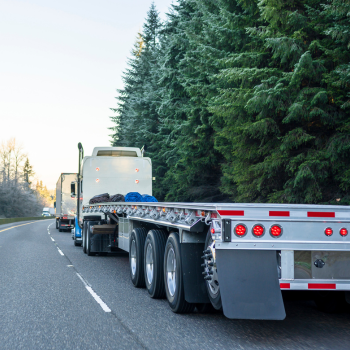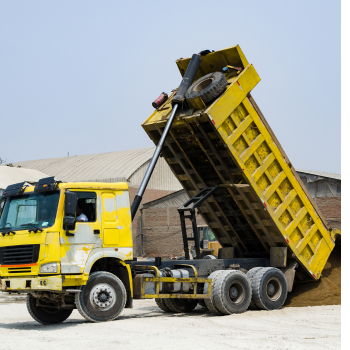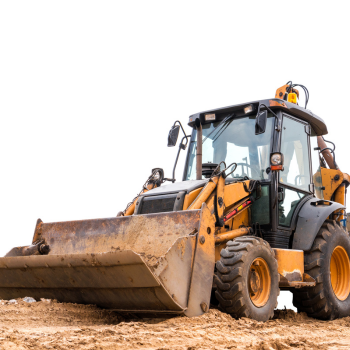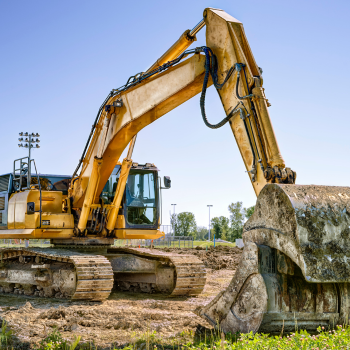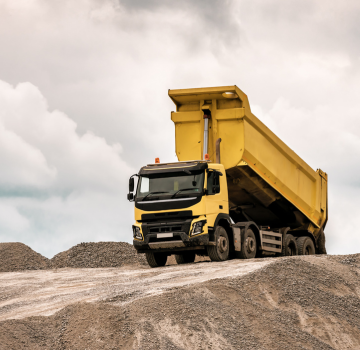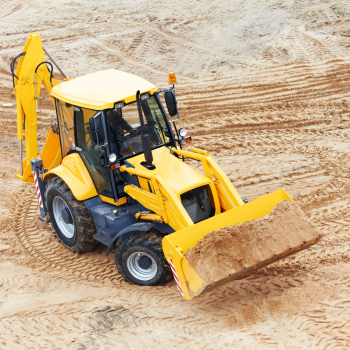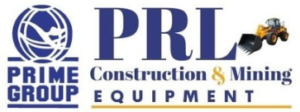-
Back Hoe Loader
A refurbished backhoe loader is a heavy-duty construction machine that combines the functionality of a loader and a backhoe. It is commonly used in construction, excavation, landscaping, and agricultural projects. The term "refurbished" refers to a machine that has been previously used and then restored to a functional condition, often by replacing worn-out components and performing necessary repairs. Specifications of a typical refurbished backhoe loader may vary depending on the specific model and manufacturer. Here are some common specifications you might find: <strong>Engine</strong>: It is usually equipped with a diesel engine for high torque and power. The engine size can vary, ranging from around 60 to 120 horsepower (HP) or more. <strong>Loader Capacity</strong>: The loader component of the backhoe has a bucket at the front for loading and carrying materials. The capacity of the loader bucket typically ranges from 0.8 to 2 cubic yards. <strong>Backhoe Digging Depth</strong>: The backhoe attachment is located at the rear of the machine and is used for digging trenches, excavating, and general earthmoving tasks. The digging depth of the backhoe can vary from 10 to 20 feet or more. <strong>Reach</strong>: The reach of the backhoe refers to its horizontal extension capacity. It determines how far the machine can reach while maintaining stability. The reach can vary from 13 to 25 feet or more. <strong>Operating Weight</strong>: The operating weight of a backhoe loader is an important consideration for transportation and stability. It typically ranges from 15,000 to 25,000 pounds, although larger models can weigh significantly more. <strong>Four-Wheel Drive</strong>: Many backhoe loaders are equipped with four-wheel drive for enhanced traction and maneuverability on various terrains. <strong>Controls</strong>: Modern backhoe loaders often feature joystick controls that provide precise operation of the loader and backhoe functions. This allows the operator to control the machine with ease. <strong>Additional Attachments</strong>: Some backhoe loaders can be equipped with additional attachments such as augers, hydraulic hammers, or trenchers, expanding their versatility and capabilities. It's important to note that specifications can vary among different manufacturers and models. When purchasing a refurbished backhoe loader, it's advisable to review the specific specifications provided by the seller to ensure it meets your requirements.Read more -
Dump Truck
A dump truck, also known as a dumper or heavy-duty truck designed for transporting and unloading bulk materials. It is commonly used in construction, mining, and other industries where large quantities of loose materials need to be transported efficiently. Here is a description of a typical dump truck: <strong>Body and Chassis:</strong> The dump truck consists of a specially designed body and a robust chassis. The body is typically made of steel and is mounted onto the chassis. The body is specifically built to accommodate bulk materials and has high sides and a rear tailgate that can be opened to discharge the load. <strong>Dumping Mechanism:</strong> The distinctive feature of a dump truck is its ability to tilt the body to unload the materials. This is achieved through a hydraulic or pneumatic system. The body can be raised at the front or on one side, allowing the materials to slide out or be deposited at the desired location. <strong>Power and Propulsion:</strong> Dump trucks are powered by diesel engines, providing the necessary torque and power to haul heavy loads. The engine is connected to a transmission system that transfers power to the wheels, typically through a driveline and axle configuration. <strong>Size and Capacity:</strong> Dump trucks come in various sizes, ranging from small to extremely large models, each with different load-carrying capacities. Smaller dump trucks, often referred to as "pickup trucks," have lower load capacities and are commonly used for smaller-scale projects. Larger dump trucks can have a capacity ranging from several tons to over 400 tons, depending on the model and intended application. <strong>Controls and Operation</strong>: Dump trucks are operated by skilled drivers who control the vehicle from the driver's cab. The driver's cab is typically located above the engine compartment, providing good visibility of the surrounding area. Controls include steering, accelerator, brake, transmission, and a control mechanism for the dumping mechanism. <strong>Safety Features:</strong> Dump trucks are equipped with safety features to protect the driver and other personnel on the worksite. These features may include seat belts, roll-over protection systems (ROPS), and warning alarms to alert nearby workers during the dumping process. <ol> <li><strong>Types and Configurations:</strong></li> </ol> Dump trucks can come in various configurations, including standard dump trucks with a fixed bed and rear dump, as well as articulated dump trucks (ADTs) with a pivoting joint between the cab and the dump body, allowing for enhanced maneuverability. <ol> <li><strong>Maintenance and Service:</strong></li> </ol> Regular maintenance and inspections are crucial to ensure the proper functioning and longevity of a dump truck. This includes routine checks of the engine, tires, hydraulic systems, and other components to identify and address any issues promptly.Read more -
Excavator
A refurbished excavator is a heavy construction machine used for digging and earthmoving tasks. It consists of a boom, stick, and bucket that are controlled by hydraulic systems. A refurbished excavator has been previously used and has undergone refurbishment to restore its functionality and performance. Here are some common descriptions and specifications you might find for a refurbished excavator: <strong>Size Classes</strong>: Excavators are available in different size classes, categorized by their operating weight. Common classes include mini excavators (under 6 metric tons), compact excavators (6-10 metric tons), and standard excavators (10-45+ metric tons). <strong>Operating Weight</strong>: The operating weight of an excavator depends on its size class. For example, a mini excavator may weigh around 1 to 6 metric tons, while a standard excavator can range from 10 to 45+ metric tons or more. <strong>Engine Power</strong>: Excavators are typically powered by diesel engines. The engine power varies depending on the size of the excavator, ranging from around 15 to 300+ horsepower (HP) or more. <strong>Digging Depth</strong>: The digging depth indicates how deep the excavator can reach. It varies depending on the model and can range from 6 to 60+ feet or more. <strong>Reach:</strong> The reach of an excavator refers to its horizontal extension capacity. It determines how far the excavator's boom can reach while maintaining stability. The reach can vary from 10 to 80+ feet or more. <strong>Bucket Capacity</strong>: Excavators have different bucket sizes to accommodate various tasks. The bucket capacity typically ranges from 0.1 to 2+ cubic yards or more, depending on the model. <strong>Operating Controls</strong>: Excavators are operated using hydraulic controls, allowing precise movement of the boom, stick, and bucket. Some excavators may have additional features like joystick controls for increased operator comfort and control. <strong>Track or Wheel Configuration:</strong> Excavators are available in both tracked and wheeled configurations. Tracked excavators provide better traction and stability on uneven terrain, while wheeled excavators offer enhanced mobility on flat surfaces. <strong>Additional Features:</strong> Excavators may come with additional features such as hydraulic quick couplers for easy attachment changes, auxiliary hydraulic circuits for operating various attachments, and advanced technology systems for improved efficiency and productivity. <p style="text-align: justify;">.</p> <iframe title="YouTube video player" src="https://www.youtube.com/embed/Wn15-4Crz8k" width="600" height="337" frameborder="0" allowfullscreen="allowfullscreen"></iframe>Read more -
Tipper Trucks
Refurbished tipper trucks are vehicles that have undergone a thorough inspection, maintenance, and repair process to restore them to a good working condition. These trucks are typically used in construction, mining, and transportation industries for carrying and unloading loose materials such as sand, gravel, and demolition debris. <iframe title="YouTube video player" src="https://www.youtube.com/embed/xP6r1gi2PUY" width="600" height="337" frameborder="0" allowfullscreen="allowfullscreen"></iframe>Read more -
Wheel Loader
A wheel loader, also known as a front loader, is a heavy equipment machine commonly used in construction, mining, and other industries that require material handling and loading tasks. It is characterized by its large front-mounted bucket and the ability to maneuver on wheels. <strong>Structure</strong>: A wheel loader has a sturdy frame made of steel, designed to withstand heavy loads and rough working conditions. It consists of a chassis, articulated steering system, and a front-mounted lift arm. <strong>Power source:</strong> Wheel loaders are powered by either diesel engines or, in some cases, electric motors. Diesel engines are more common due to their high torque output and fuel efficiency. <strong>Wheels and tires:</strong> Wheel loaders are equipped with large, rugged tires that provide traction and stability on various terrains. Some models have articulated steering, which allows for improved maneuverability. <strong>Bucket:</strong> The front-mounted bucket is the primary attachment of a wheel loader. It is used for loading loose materials such as soil, gravel, sand, rocks, or debris. Buckets can vary in size and shape depending on the intended application. <strong>Lift arm</strong>: The lift arm, also known as the loader arm or boom, is connected to the front of the machine and supports the bucket. It can be raised, lowered, and tilted to control the position of the bucket during loading and dumping operations. <strong>Operator's cab:</strong> The wheel loader features an enclosed operator's cab mounted on the chassis. The cab is designed to provide a comfortable and safe working environment for the operator, equipped with controls, instrumentation, and a seat with visibility of the working area. <strong>Controls:</strong> The operator controls the wheel loader's movement and attachment operations using hydraulic controls. These controls allow precise manipulation of the lift arm, bucket, and other machine functions. <strong>Versatility:</strong> Wheel loaders can be equipped with various attachments, such as forks, grapples, snowplows, or sweepers, to expand their versatility and perform different tasks. <strong>Safety features:</strong> Modern wheel loaders are equipped with safety features such as ROPS (Roll-Over Protective Structure), FOPS (Falling Object Protective Structure), seat belts, backup alarms, and enhanced visibility mirrors to ensure operator safety. <strong>Size and capacity:</strong> Wheel loaders come in different sizes, ranging from compact loaders suitable for small construction projects to large loaders used in mining and quarry operations. The capacity of the bucket also varies, with larger machines capable of handling more significant amounts of material.Read more
This is where you can browse products in this store.

